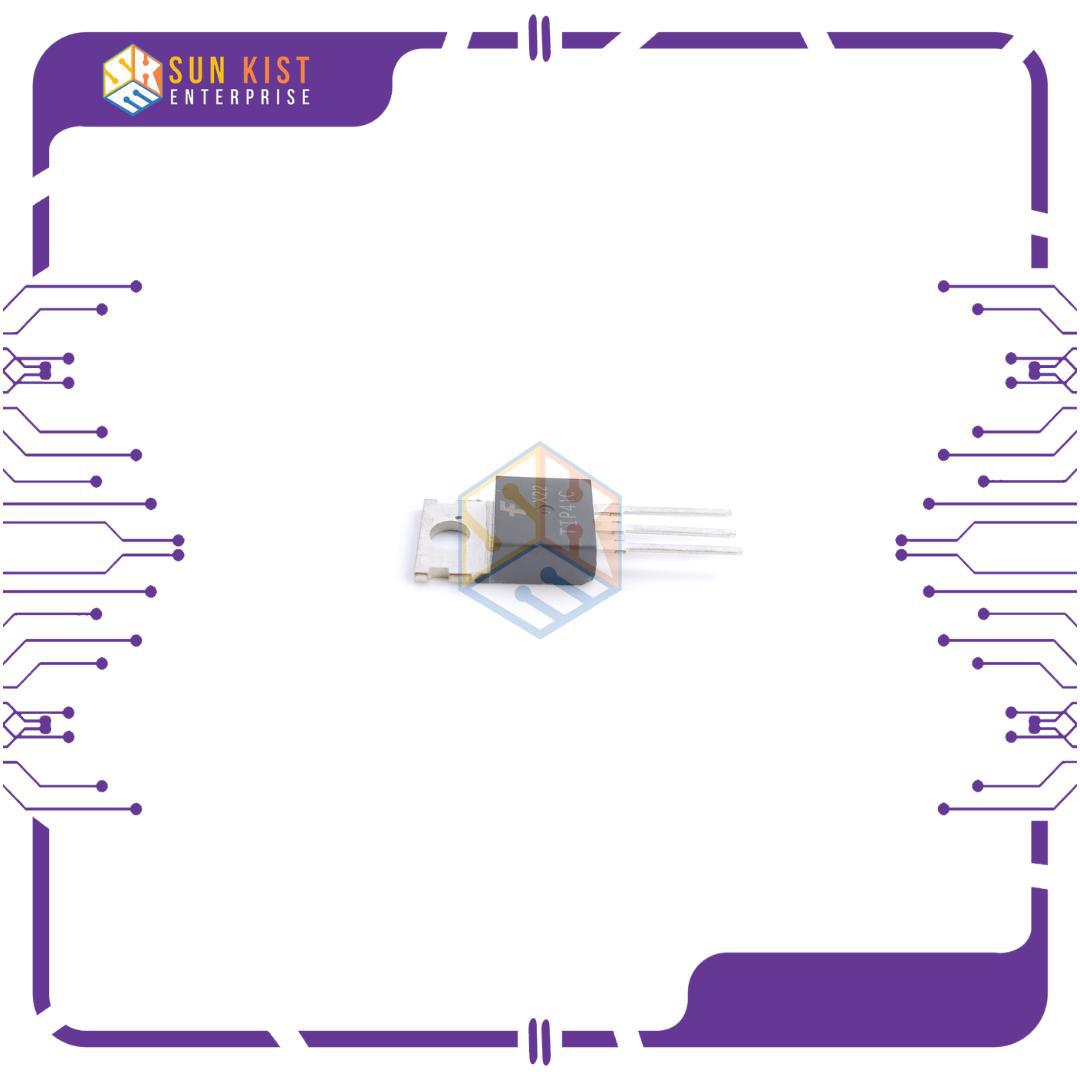Description
The TIP41C is a bipolar junction transistor (BJT) commonly used for general-purpose amplification and switching applications. Here’s a description of the TIP41C transistor:
Type:
The TIP41C is an NPN (Negative-Positive-Negative) transistor. In an NPN transistor, current flows from the collector to the emitter when a small current is applied to the base.
Polarity:
The TIP41C has three terminals: Collector (C), Base (B), and Emitter (E). The arrow in the transistor symbol typically points in the direction of conventional current flow from the collector to the emitter.
Amplification and Switching:
The TIP41C is designed for both amplification and switching applications. It can be used in audio amplifiers, power amplifiers, and various electronic circuits where moderate power and current handling capabilities are required.
Maximum Ratings:
The transistor has maximum ratings for parameters such as collector current (IC), collector-emitter voltage (VCE), power dissipation (Ptot), and temperature. Exceeding these maximum ratings can lead to damage or failure.
Collector Current (IC):
The TIP41C is capable of handling moderate to high collector currents. The collector current is a key parameter that defines the maximum current that can flow from the collector to the emitter.
Collector-Emitter Voltage (VCE):
The maximum voltage across the collector and emitter is specified as the collector-emitter voltage (VCE). This voltage should not be exceeded to prevent breakdown.
Power Dissipation (Ptot):
Power dissipation refers to the maximum amount of heat the transistor can handle. Excessive heat can degrade performance or damage the device.
Gain (hfe):
The current gain (hfe) of the TIP41C is a measure of how much the transistor amplifies the input current. It is an important parameter for amplification applications.
Complementary Pair:
The TIP41C is often used in conjunction with its complementary PNP transistor, such as the TIP42C. This combination allows for the design of push-pull amplifier circuits.
Package Type:
The TIP41C is available in various packages, such as TO-220, TO-220FP, and TO-247. The package influences the transistor’s thermal characteristics and ease of mounting on a heat sink.
Applications:
Common applications include audio amplifiers, power supplies, motor control circuits, and general-purpose switching circuits.
Safe Operating Area (SOA):
The Safe Operating Area is a graphical representation that defines the limits of collector current, collector-emitter voltage, and power dissipation to ensure safe operation.
Heat Sink:
Due to its power handling capabilities, the TIP41C may require a heat sink to dissipate heat effectively. This is especially important in applications where the transistor operates at higher power levels.
When using the TIP41C transistor in a circuit, it’s important to consult the datasheet provided by the manufacturer. The datasheet contains detailed information on electrical characteristics, pin configurations, recommended operating conditions, and application notes.










